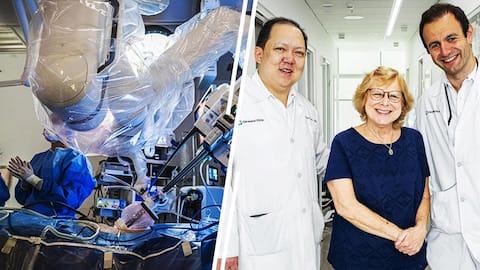Groundbreaking robot-assisted dual kidney transplant successful in Ohio
What's the story
Joanne Kukula, a 70-year-old woman from Ohio, has made medical history by becoming the first person in the United States to undergo a robot-assisted dual kidney transplant. The innovative procedure took place at the Cleveland Clinic in March 2024 and was deemed successful with Kukula recovering swiftly. Kukula shared that her experience went well and that she experienced minimal pain from the incisions.
Technological triumph
Robotic surgical system revolutionizes kidney transplants
The surgery was unique as it utilized a robotic surgical system to implant two kidneys from a single deceased donor. This novel approach aims to extend the use of marginally effective kidneys from expanded criteria donors who would otherwise be ineligible. Dr. Mohamed Eltemamy, who performed the procedure using an advanced multiport robot, stated that this technique offers more flexibility than traditional surgery.
Surgical innovation
Advantages of robotic technique in kidney transplants
Eltemamy explained that the robotic technique allows for magnified 3DHD vision, articulation at the tips of the instruments exceeding human wrist range, and better ergonomics. It also enables work in small spaces. Eltemamy highlighted the minimally invasive nature of the procedure, explaining that instead of making two incisions or a large midline incision, they can place the kidneys on both sides of the torso through a single small incision.
Functional boost
Dual kidney transplant enhances donor kidney functionality
Dr. Alvin Wee, program director at Cleveland Clinic's Kidney Transplant Program, explained the benefits of this approach. He stated that sometimes a single donor kidney may not have enough functionality. Wee emphasized the potential of dual kidney transplants to increase organ functionality, noting that they request both donor kidneys, which together can provide more than 100% functionality.
Future forecast
Robotic surgeries expected to rise at Cleveland Clinic
Cleveland Clinic's Kidney Transplant Program performs over 300 transplants annually, with approximately 10% carried out robotically. This percentage is expected to increase as the technology becomes more available and affordable due to ongoing advancements. According to Wee, robot-guided surgery primarily involves one small incision, resulting in less pain and a quicker recovery for patients than traditional surgeries.
